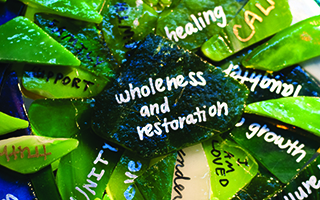Restorative Justice
The last 40 years have seen the exponential expansion of the restorative justice movement. From the first cases in Ontario and Northern Indiana to the South African Truth and Reconciliation Commission, it has truly grown to be a worldwide movement of people committed to a new conception of justice – a more people and relationship-centered conception of justice.
“Restorative justice is an approach to achieving justice that involves, to the extent possible, those who have a stake in a specific offense or harm to collectively identify and address harms, needs, and obligations in order to heal and put things as right as possible.”
– Howard Zehr, The Little Book of Restorative Justice
EMU has become a world leader in restorative justice education and practice. The Center for Justice and Peacebuilding along with the Zehr Institute for Restorative Justice provide graduate level education and training in restorative justice theory and practice. The master of arts in education supports the nation’s first restorative justice program within a graduate teacher education, and the undergraduate peacebuilding and development major offers courses in restorative justice.

Since the 2011-2012 academic year, the Student Life division at EMU has made a concerted effort to offer restorative responses for harms that happen on the EMUcampus involving students, faculty, and/or staff.
Central to restorative justice is asking different questions in regards to wrongdoing and crime. Instead of the standard questions of Western judicial systems: What law(s) have been broken? Who did it? What do they deserve? Restorative justice asks a new set of questions: Who has been harmed? What are their needs? Whose obligations are these? Howard Zehr refers to these alternative questions as changing lenses.
Instead of focusing on making sure that offenders get what they deserve, restorative justice focuses on needs and obligations, attempting to meet the needs of the various parties involved. The process of meeting parties’ needs is contextual according to the particular harm, but has often taken place through victim offender conferencing, family group conferencing, or a circle process.
In his updated version of The Little Book of Restorative Justice, Howard Zehr summarizes restorative justice using the number 3. The summary is shared here with permission.
Restorative Justice in Threes
3 Assumptions
- When people and relationships are harmed, needs are created
- The needs created by harms lead to obligations
- The obligation is to heal and “put right” the harms; this is a just response
3 Principles
A just response:
- Repairs the harm caused by, and revealed by, wrongdoing (restoration)
- Encourages appropriate responsibility for addressing needs and repairing the harm (accountability)
- Involves those impacted, including the community, in the resolution (engagement)
3 Underlying Values
- Respect
- Responsibility
- Relationship
3 Central Questions
- Who has been hurt?
- What are their needs?
- Who has the obligation to address the needs, to put right the harms, to restore relationships?
3 Stakeholder Groups should be considered and/or involved:
- Those who have been harmed, and their families
- Those who have caused harm, and their families
- The relevant community or communities
3 Aspirations: The desire to live in right relationship
- With one another
- With the creation
- With the creator
Would you like to explore restorative justice for a situation you are involved in?
Contact Jonathan Swartz, Director of Residence Life, Student Accountability, and Restorative Justice


